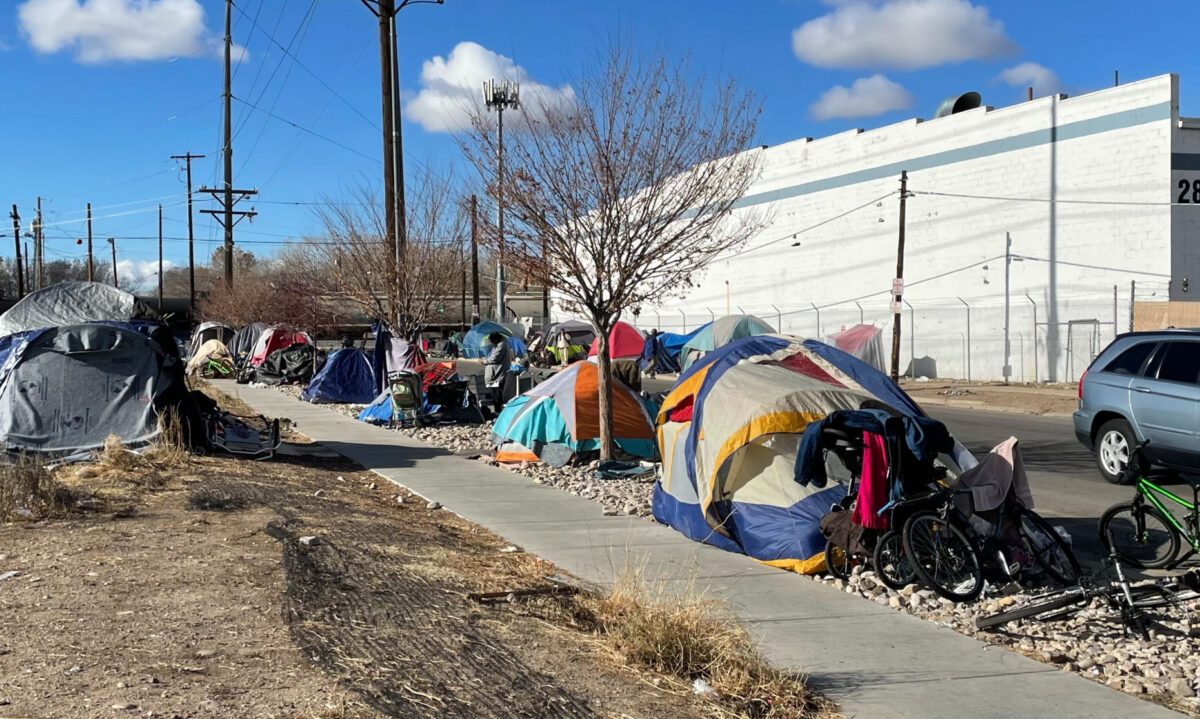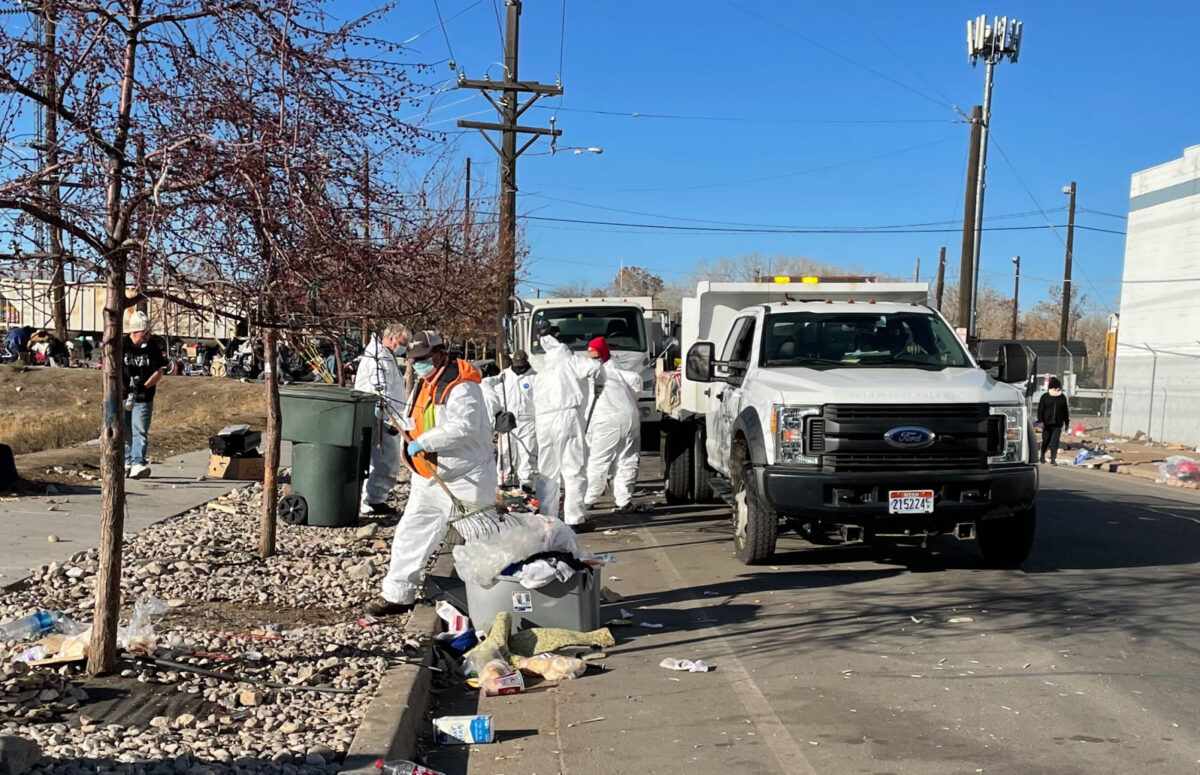Ogden homeless scattered, but still out there, in wake of encampment’s removal
OGDEN — It’s been two months since city officials spearheaded the dismantling of the large homeless encampment that sprouted on 33rd Street here.
As many as 100 people had been living in perhaps 30 or more tents and other makeshift structures along the street east of Pacific Avenue, near the Lantern House homeless shelter. It was an atypically visible display of homelessness in Ogden.
Since then — the 33rd Street tent city started taking shape last summer and officials dismantled it on Dec. 10 — no other encampment of that size has emerged in Ogden, officials now say. And those involved with the homeless community say those who lived there have since found other arrangements — at homeless shelters, the homes of family members and at other places.

TIM VANDENACK, Standard-Examiner
A homeless encampment along 33rd Street in Ogden is pictured on Nov. 26, 2020. Officials dismantled it on Dec. 10, 2020.
That said, the issue hasn’t gone away. Some remain homeless, perhaps in the wooded areas around the 21st Street Pond on the city’s west side, where the homeless have typically congregated over the years, and at other locations. Others may have gone to Salt Lake City.
“They are scattered,” said Andi Beadles, director of the Weber Housing Authority.
Volunteers spread out across Ogden and the rest of Weber County from Jan. 28-30 to find the homeless, part of the annual statewide count of the population, Beadles said. And while official figures have yet to be released, the homeless are still out there. “We find small camps from time to time at different parts of the city,” said Mark Johnson, chief administrative officer for the city.

TIM VANDENACK, Standard-Examiner
A crew of Ogden City workers, in white, cleans the site of a homeless encampment along 33rd Street on Dec. 1, 2020. City crews permanently dismantled the camp on Dec. 10, 2020.
Indeed, for the leaders and nonprofit groups most involved in aiding the homeless, efforts continue to reach out to them, to get them assistance, even if the 33rd Street encampment is gone. Even before the COVID-19 pandemic, which some think may have played a role in the emergence of the encampment, efforts had been growing to deal with the homeless issue.
Notably, says Melissa Freigang, head of the Weber County Prosperity Center of Excellence, the varied groups that aid the homeless had come together to better coordinate their efforts. The Prosperity Center of Excellence, part of the Weber County government apparatus, focuses on fighting intergenerational poverty and has also taken a role in helping address homeless.
“Inside of a year, we have made fantastic progress,” said Freigang. “They are all energized and we are talking and collaborating and really trying to make things better.”
What’s more, $759,000 in federal CARES Act funding was funneled to eight groups that aid the homeless as part of their efforts, according to John Bond, the Weber County treasurer.
Still, some, like Angel Castillo, a community advocate on homelessness and other issues, says the problem persists. She doesn’t think enough is being done.
She thinks the tent city encampment may have emerged because some were leery of entering the Lantern House due to worries, justified or not, that they’d face an increase risk of contracting COVID-19 inside the facility. The facility had around 200 open beds when officials dispersed the encampment, which factored in their decision to take action — the homeless had alternatives to living on the street.
“We have had plenty of capacity at Lantern House,” Johnson said.
Castillo also maintains that the views and concerns of the homeless have to be taken more seriously. Living in a shelter can be loud and cramped, discouraging some from seeking help. Those who go inside usually can’t bring many belongings, forcing some to stay out instead to safeguard their things. “It’s not going to go away by ignoring it,” she said.
Undoubtedly, it’s a thorny topic. The removal of the encampment prompted criticism from some who thought officials should have left it alone, provided cleanup, perhaps, but let the tents remain. A small contingent protested the dismantling days after Ogden public works employees removed the tents and other accumulated items, accompanied by social workers who offered help to those in the encampment and backed by police.
“It’s very controversial and I’m super sensitive on the issue,” Freigang said.
She, like many others, saw the encampment as a health threat given reports of violence and drug dealing, of people relieving themselves in grassy areas abutting the encampment zone and more. “You don’t allow people to live in an unhealthy situation when you have a shelter,” she said.
Looking forward, the homeless issue remains. Beadles said the extension of the federal eviction moratorium by President Joe Biden’s administration through March will help. The softening of the economy brought on by the pandemic has raised the specter of increased homelessness as people lose work hours or their jobs, but the moratorium has given them a mechanism to remain housed even if they face a drop in income.
Looking to April, though, if things don’t stabilize more, some could face a heightened risk of eviction and homelessness, she worries.
